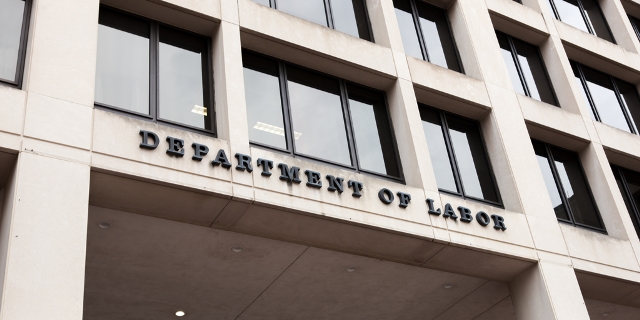

DOL Issues Much Anticipated Regs and IRS Issues Guidance on Families First Coronavirus Response Act

The Families First Coronavirus Response Act (the Act) became effective on Wednesday, April 1, 2020. While the U.S. Department of Labor (DOL) has been publishing informal guidance and FAQs on the Act since its enactment, on April 1, 2020, the DOL issued temporary regulations to this new Act. Notably, these regulations are effective immediately and largely mirror the DOL’s informal guidance and FAQs that we have been reporting on. Even though these regulations are temporary, unless they are superseded, they carry the weight of formal regulations. Some highlights from the DOL’s regulations:
- The DOL finally answered the burning question every employer wanted to know: Does a shelter in place or stay-at-home order (like Governor Wolf’s stay-at-home order) qualify as a “quarantine or isolation order” under Emergency Paid Sick Leave Act (EPSLA)? The answer is YES! This clarification has immediate impact on Pennsylvania employers because now every employee in Pennsylvania who is not working for a “life-sustaining business” or able to telework is now entitled to up to 80 hours of paid sick leave.
- EPLSA or Emergency Family and Medical Leave Expansion Act (EFMLEA) leave is not available if the employer does not have work available for the employee. Period. End of story. It does not matter if the employer does not have work for that employee as a result of COVID-19, a quarantine order, or any other circumstances.
- The taking of EPSLA or EFMLEA leave does not impact an employee’s exempt status under the Fair Labor Standards Act (FLSA).
- EPSLA and EFMLEA leave may be taken intermittently, but only if the employer and employee agree and only if the employee is teleworking or caring for a child whose school or child care provider has been closed. Employees may not take intermittent leave for reasons 1-4 and 6 under the EPSLA.
- The DOL’s regulations further explain the steps small businesses (i.e., those with fewer than 50 employees) must take to qualify for the small business exception under the Act.
- Employees are not entitled to a payout of any unused EFMLEA/EPSLA leave upon termination or upon the expiration of the Act (i.e., on December 31, 2020).
- A single employee may not take more than 80 hours of paid sick leave under the EPSLA, regardless of whether that employee works for more than one employer or quits his/her job and finds another.
- The regulations also provide employers with guidance on what information they may require their employees provide when requesting leave under the EFMLEA and EPSLA that largely mirror the IRS’ guidance described below. Notably, if the employee does not provide this information, the employer is not required to provide the employee with leave.
Also, late-Tuesday, the IRS issued its own guidance and detailed FAQs interpreting the Act. While most of these FAQs focus on the tax aspects of the Act, there are a few provisions that impact employers outside of the tax universe:
-The IRS made it clear that only one caretaker may take EPSLA or EFMLEA leave to care for a child whose school or childcare provider is closed. Moreover, if the child is over 14 years old, the parent must provide a written statement explaining the “special circumstances” requiring the employee to provide care to that child during daylight hours. If an employee cannot provide this information, employers may deny the leave request.
-The IRS set forth the specific information and records employers must receive and maintain from their employees in order to substantiate their eligibility for EPSLA and EFMLEA tax credits:
- The employee must submit a written request for leave that includes the following:
- The employee’s name;
- The date or dates for which leave is requested;
- A statement of the COVID-19 related reason the employee is requesting leave and written support for such reason; and
- A statement that the employee is unable to work, including by means of telework, for such reason.
- In the case of a leave request based on a quarantine order or self-quarantine advice, the statement from the employee required by d) above must include the following:
- The name of the governmental entity ordering quarantine or the name of the health care professional advising self-quarantine and
- If the person subject to quarantine or advised to self-quarantine is not the employee, that person’s name and relation to the employee.
- In the case of a leave request based on a school closing or child care provider unavailability, the statement from the employee required by d) above should include the following:
- The name and age of the child (or children) to be cared for;
- The name of the school that has closed or place of care that is unavailable;
- A representation that no other person will be providing care for the child during the period for which the employee is receiving EPSLA/EFMLEA leave; and
- With respect to the employee’s inability to work or telework because of a need to provide care for a child older than fourteen during daylight hours, a statement that special circumstances exist requiring the employee to provide care.
-The IRS’ FAQs also list the additional records employers must retain to substantiate EPSLA or EFMLEA leave and obtain the tax credit:
- Documentation to show how the employer determined the amount of qualified EPSLA/EFMLEA leave wages paid to employees that are eligible for the credit, including records of work, telework, and qualified leave used.
- Documentation to show how the employer determined the amount of qualified health plan expenses that the employer allocated to wages.
- Copies of any completed Forms 7200, Advance of Employer Credits Due To COVID-19, that the employer submitted to the IRS.
- Copies of the completed Forms 941, Employer’s Quarterly Federal Tax Return, that the employer submitted to the IRS (or, for employers that use third party payers to meet their employment tax obligations, records of information provided to the third party payer regarding the employer’s entitlement to the credit claimed on Form 941).
A note for our readers, the above is just some of the highlights from the IRS’ guidance and the DOL’s new regulations interpreting the Act. However, our Employment & Employee Relations Practice has been closely monitoring the rapidly evolving COVID-19 pandemic and its impact on employers. If you have any specific questions regarding the DOL’s new regulations or its prior guidance, the IRS’ new guidance or any of the employment implications of the COVID-19 pandemic, we encourage you to reach out to our team. We are here to answer any of your questions related to the Act and will continue to keep you informed on the latest employment-related latest developments in this fast-evolving area.
Related Industries
- Construction
- Real Estate
- Commercial Transportation
- Communications
- Death Care
- Energy and Utilities
- Banking and Financial Services
- Health Care
- Heavy/Highway & Utility Construction
- Higher Education
- Hospitality
- Insurance
- Manufacturing
- Medical Device & Life Sciences
- Municipal & Government
- Pharmaceutical
- Professional Services
- Retail

